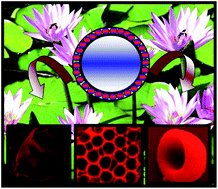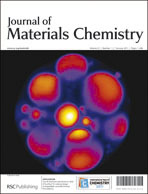Hollow hemisphere and microcapsules of nonionic copolymer†
Abstract
Hemispherical colloidal nanowells or microwells with hollow interiors are becoming increasingly important for the encapsulation of functional materials. There has been rapid progress to develop new methods to obtain such structures. In this work, we present


 Please wait while we load your content...
Please wait while we load your content...